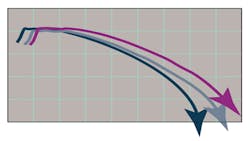It would be easier to accept such pronouncements if we hadn’t heard them before. Back in the 1960s, it was the Soviets who were destined to bury the U.â S. with their economic output. Nobel Prize-winning economist Paul Samuelson wrote a widely used textbook in which he predicted the Soviet national income would overtake that of the U.â S. by 1997 at the latest. In later editions printed in the 1980s, he pushed the date back to 2012.
But by the late 1980s, Japan was the one to eat our lunch. The New York Times quoted Sony chairman Akio Morita in 1989 proclaiming: “The time will never again come when America will regain its strength in industry.” Japanese politician Shintaro Ishihara wrote a book around the same time, A Japan That Can Say No, in which he decreed, “there is no hope for the U.â S.” Even some Americans bought this bunk. Senator Paul Tsongas (D, Mass.) moaned in the early 1990s that “The cold war is over; Japan has won.”
The reality, of course, is that economic growth in China and Japan collapsed. By Y2K, Japanese growth was approximately zero and stayed at about 1% for the next 10 years. What is now Russia has a GDP that accounts for about 2% of world GDP, putting it on par with Spain’s, according to the U.â S. Dept. of Agriculture.
That brings us back to China, the next country whose economic growth will supposedly doom the U.â S. to third-world status. Josef Joffe, a Senior Fellow at Stanford University and publisher of a widely read German newspaper, points out that China has grown rapidly, but its growth rate is no surprise simply because it started from an extremely small base. It is easy to double your output when you don’t have much output, Joffe says. Growth becomes harder for economies as they become larger, and such growth pains are already emerging in China.
For example, China’s working-age population will peak in 2020 and then start declining. The U.â N. predicts that by 2025 China will hold less than a fifth of the world’s population but almost a quarter of the world’s senior citizens.
And though Chinese productivity is rising, it can’t compensate for exponential wage gains there. China’s cost advantage in manufacturing may, thus, be coming to an end. Chinese wages and benefits have risen so fast that some predict Chinese manufacturing costs will match those in America by 2015.
Perhaps political commentator Charles Krauthammer put it best when he said, “If the Roman Empire had declined at (our) rate, you’d be reading this column in Latin.”
About the Author
Leland Teschler
Lee Teschler served as Editor-in-Chief of Machine Design until 2014. He holds a B.S. Engineering from the University of Michigan; a B.S. Electrical Engineering from the University of Michigan; and an MBA from Cleveland State University. Prior to joining Penton, Lee worked as a Communications design engineer for the U.S. Government.

